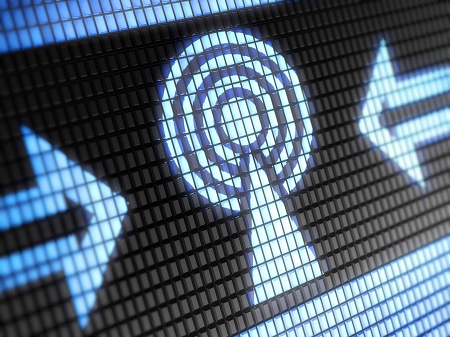LiFi: Wireless At Light Speed Comes With Drawbacks
Researchers say LED light bulbs can deliver broadband speeds up to 1Gbps, but the line-of-sight requirement makes it a tough sell.


Mastering Mobile Apps: 9 Classes For IT Pros
Mastering Mobile Apps: 9 Classes For IT Pros (Click image for larger view and slideshow.)
A small company from Estonia claims to have made a breakthrough by using LED lights bulbs to transmit data at 1Gbps. LiFi, as the technology is called, relies on light to carry information from the source to devices within sight.
LiFi may be much faster than WiFi, but it has serious limitations that will likely keep it from widespread adoption.
The concept of LiFi was first proposed back in 2013. Researchers from the UK were able to transmit data at speeds up to 10Gbps using LEDs. Estonia's Velmenni says LiFi has a theoretical top speed of 224Gbps, which it has been able to recreate in its labs. More to the point, Velmenni has a commercial LiFi product (called Jugnu) that can deliver 1Gbps speeds.
LED bulbs produce constant output when fed a constant current. Varying the current can dim the light up or down. The key behind making LiFi a reality rests in the nature of LED bulbs, which are semiconductor devices. This means the current and resulting output can be altered at incredibly quick speeds. Velmenni says such rapid modulations are invisible to the naked eye, so the LED bulbs appear to shine and create light normally. Data can be embedded in the modulations, which is then read by photodetectors and converted back to regular electric current on the receiving end.
The speeds are truly impressive. Transmitting at 1Gbps is a generational leap over today's WiFi -- and let's face it, there's no end to the demand for fast wireless technology.
However, LiFi's range will be its biggest drawback.
Line-of-sight means the photodetectors have to be able to actually see the light in order to capture the data. In other words, LiFi doesn't pass through walls, which is one of the chief benefits of WiFi. Signal from a single WiFi hotspot can extend for hundreds of feet. LiFi will be limited to single rooms or other contained spaces.
LiFi does solve some of WiFi's woes, however, such as security. WiFi signal bleeds all over the place, and can pose a security risk (or at least permit mooching). LiFi's limited scope means it is less likely to serve as an entry point for unauthorized users. This makes it an ideal solution for some industries.
[Read Is 'Private' Enterprise WiFi Obsolete?.]
LiFi's arrival is still on the horizon. "Currently, we have designed a smart-lighting solution for an industrial environment where the data communication is done through light," said Velmenni CEO Deepak Solanki told the International Business Times. "We are also doing a pilot project with a private client where we are setting up a Li-Fi network to access the Internet in their office space." Solanki says a consumer-grade version of LiFi is three to four years away.
In other words, WiFi will continue to be the primary indoor wireless tech used by the majority of businesses and homes for years to come.
**New deadline of Dec. 18, 2015** Be a part of the prestigious InformationWeek Elite 100! Time is running out to submit your company's application by Dec. 18, 2015. Go to our 2016 registration page: InformationWeek's Elite 100 list for 2016.
About the Author(s)
You May Also Like
How to Amplify DevOps with DevSecOps
May 22, 2024Generative AI: Use Cases and Risks in 2024
May 29, 2024Smart Service Management
June 4, 2024







